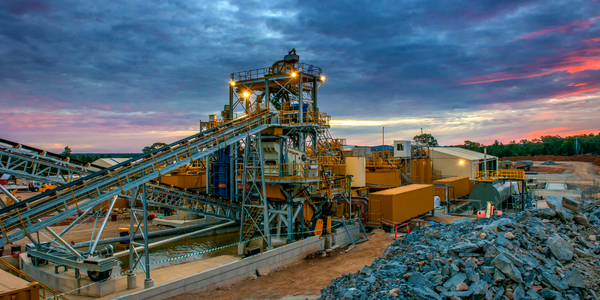Download PDF
Optimising Industrial Valve Block for Additive Manufacturing: A Case Study of VTT and Nurmi Cylinders
Technology Category
- Functional Applications - Manufacturing Execution Systems (MES)
Applicable Industries
- Equipment & Machinery
- Metals
Applicable Functions
- Product Research & Development
- Sales & Marketing
Use Cases
- Additive Manufacturing
- Rapid Prototyping
The Challenge
VTT, a leading research and technology centre in Finland, partnered with Nurmi Cylinders, a Finnish manufacturer of hydraulic cylinder products, to optimise a valve block for demanding industrial applications using Additive Manufacturing (AM). The challenge was to design a valve block that would fully benefit from the AM process, reducing its size and the amount of material needed, and optimising its internal channels to produce a better component for the customer. Traditional manufacturing methods for valve blocks involve forming a block of metal into the desired shape and drilling internal channels to accommodate hydraulic fluid flow. This process is often cumbersome and prone to alignment issues and potential leakage. Furthermore, not every component or product is suitable for AM, depending on its size, form, design, and the quantity needed.
About The Customer
The customer in this case study is Nurmi Cylinders, a Finnish manufacturer of hydraulic cylinder products for offshore, industrial, marine and mobile hydraulics. Nurmi Cylinders was one of the funders of the project and provided the example of a valve block to be optimised for Additive Manufacturing. The company provided the boundary conditions and additional internal limitations for the design of the valve block, including where the valve had to be placed and which machining tolerances had to be considered. The size, position and orientation of the internal channels were also chosen by Nurmi Cylinders and were part of the non-design space.
The Solution
VTT engineers used Altair Engineering’s HyperWorks® CAE software suite to design, optimise and analyse the valve block. The optimisation tool and finite element solver in the suite, OptiStruct®, was used to propose an optimal design based on the defined design space, limitations, loads and other boundary conditions provided by the customer. The optimised design was then re-meshed and re-analysed using OSSmooth, one of OptiStruct’s shape generation tools, to ensure that all initial design requirements were met and stress limits were not exceeded. To prepare the optimised mesh for printing, VTT used a software application called 3-maticsSTL from Materialise, which enabled design modification, re-meshing and the creation of 3D textures, lightweight models and conformal structures. The valve block went through several design iterations, with the route of the internal fluid channels being changed to optimise performance. The final design was printed using Selective Laser Melting (SLM) machines.
Operational Impact
Related Case Studies.

Case Study
Smart Water Filtration Systems
Before working with Ayla Networks, Ozner was already using cloud connectivity to identify and solve water-filtration system malfunctions as well as to monitor filter cartridges for replacements.But, in June 2015, Ozner executives talked with Ayla about how the company might further improve its water systems with IoT technology. They liked what they heard from Ayla, but the executives needed to be sure that Ayla’s Agile IoT Platform provided the security and reliability Ozner required.

Case Study
IoT enabled Fleet Management with MindSphere
In view of growing competition, Gämmerler had a strong need to remain competitive via process optimization, reliability and gentle handling of printed products, even at highest press speeds. In addition, a digitalization initiative also included developing a key differentiation via data-driven services offers.

Case Study
Goldcorp: Internet of Things Enables the Mine of the Future
Goldcorp is committed to responsible mining practices and maintaining maximum safety for its workers. At the same time, the firm is constantly exploring ways to improve the efficiency of its operations, extend the life of its assets, and control costs. Goldcorp needed technology that can maximize production efficiency by tracking all mining operations, keep employees safe with remote operations and monitoring of hazardous work areas and control production costs through better asset and site management.

Case Study
Predictive Maintenance for Industrial Chillers
For global leaders in the industrial chiller manufacturing, reliability of the entire production process is of the utmost importance. Chillers are refrigeration systems that produce ice water to provide cooling for a process or industrial application. One of those leaders sought a way to respond to asset performance issues, even before they occur. The intelligence to guarantee maximum reliability of cooling devices is embedded (pre-alarming). A pre-alarming phase means that the cooling device still works, but symptoms may appear, telling manufacturers that a failure is likely to occur in the near future. Chillers who are not internet connected at that moment, provide little insight in this pre-alarming phase.

Case Study
Premium Appliance Producer Innovates with Internet of Everything
Sub-Zero faced the largest product launch in the company’s history:It wanted to launch 60 new products as scheduled while simultaneously opening a new “greenfield” production facility, yet still adhering to stringent quality requirements and manage issues from new supply-chain partners. A the same time, it wanted to increase staff productivity time and collaboration while reducing travel and costs.

Case Study
Integration of PLC with IoT for Bosch Rexroth
The application arises from the need to monitor and anticipate the problems of one or more machines managed by a PLC. These problems, often resulting from the accumulation over time of small discrepancies, require, when they occur, ex post technical operations maintenance.





